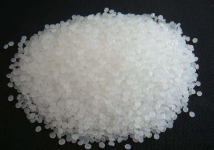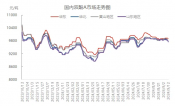read: 1199 time:2025-06-25 09:31:11 from:化易天下
Phenol is a fascinating organic compound with a unique structure that makes it highly reactive in certain chemical reactions, particularly in electrophilic substitution reactions. In this article, we will explore why phenol undergoes electrophilic substitution and break down the key factors contributing to this behavior.
To understand why phenol undergoes electrophilic substitution, it's crucial to first look at its structure. Phenol (C6H5OH) consists of a benzene ring attached to a hydroxyl group (-OH). The hydroxyl group is strongly electron-donating due to its ability to release electron density into the benzene ring through resonance and inductive effects. This increased electron density in the ring enhances its reactivity toward electrophiles.
The hydroxyl group in phenol makes the benzene ring more nucleophilic compared to benzene itself. This means that the ring has a higher tendency to attract and react with positively charged species, known as electrophiles. This reactivity is the foundation of why phenol undergoes electrophilic substitution.
Phenol's benzene ring is more reactive than that of benzene due to the activating effect of the hydroxyl group. The -OH group donates electron density through resonance, creating an increased electron density particularly at the ortho (positions 2 and 6) and para (position 4) positions relative to the hydroxyl group. This enhanced electron density makes these positions more susceptible to attack by electrophiles.
When phenol undergoes electrophilic substitution, the reaction tends to occur preferentially at these ortho and para positions. This selective reactivity is a direct consequence of the electron-donating effect of the hydroxyl group, which stabilizes the transition state and the intermediate carbocation formed during the reaction. The stability of these intermediates is a key reason why phenol undergoes electrophilic substitution more readily than benzene.
There are several types of electrophilic substitution reactions that phenol can undergo, each characterized by the nature of the electrophile involved. Common examples include nitration, halogenation, and sulfonation. In each case, the hydroxyl group activates the benzene ring toward the electrophile, making the reaction more efficient and requiring milder conditions compared to reactions with benzene.
For instance, in the nitration of phenol, the presence of the hydroxyl group allows the reaction to proceed at lower temperatures and with less concentrated acids than would be necessary for benzene. This is another demonstration of why phenol undergoes electrophilic substitution so readily.
In summary, the reason why phenol undergoes electrophilic substitution lies in the unique interaction between its hydroxyl group and the benzene ring. The electron-donating nature of the hydroxyl group activates the ring, making it more nucleophilic and thus more reactive toward electrophiles. This reactivity is further enhanced by the selective positioning of the reaction at the ortho and para positions, where the electron density is highest.
Understanding these factors not only explains why phenol undergoes electrophilic substitution but also provides insights into the broader reactivity patterns of aromatic compounds with activating groups. Whether in industrial applications or academic research, this knowledge is crucial for manipulating chemical reactions involving phenol and its derivatives.

Jincheng Petrochemical's 300000 ton polypropylene plant successfully trial production, 2024 polypropylene market analysis

The ABS market remains sluggish, what is the future direction?

Market differentiation of bisphenol A intensifies: prices rise in East China, while prices generally decline in other regions

The production method and process flow of silicone acrylic lotion, and what are the common raw materials